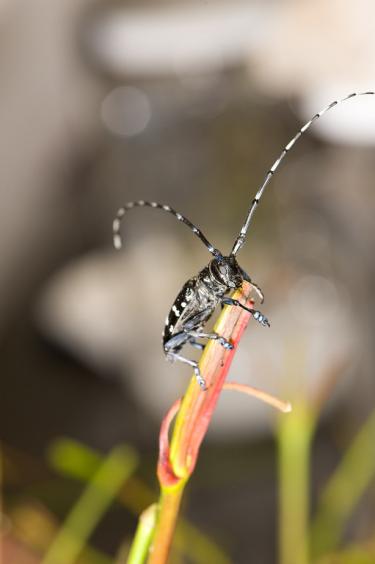Pests and Weeds
In the last 20 years, about one new species of beetle has landed on North American shores each year, imported from other parts of the world. The arrivals come mostly in wood pallets and other packing materials. Every time a giant cargo ship arrives in a port, loaded with huge containers that transfer to trucks and trains, it could be bringing in a new pest. World trade is so huge, it’s impossible to inspect all goods for tiny stowaways.
And that’s just beetles. Other insects can kill trees, too. And it’s not only imports, but also native insects that attack woods. So can fungi and diseases caused by other pathogens.
It’s appealing to just let your trees take care of themselves, but in the case of invasive species, they may not be able to; trees have little protection against bugs from overseas. Even native pests can overwhelm trees’ natural defenses. When trees die, that can affect the animals that live in them and the plants that grow beneath them.
People with woods aren’t helpless. You can make your woods less hospitable to insects and disease. And when the little pests do show up, there are often early warning signs. With the help of this website and an expert like a local forester or Cooperative Extension office, you may be able to identify the culprits and fight them off with pesticides, chainsaws, fire, or other tools.
In this section you will learn about:
- How to Monitor your Woods for Outbreaks
- What to do if you Suspect and Outbreak
- Prevention Steps You Can Take
- How to use Integrated Pest Management
- Using Pesticides Safely
- Addressing Specific Pests and Weeds
Find out More
- Find your woodlands area on this map, courtesy of the National Invasive Species Information Center. Once you get to the summary page for your state, click on the Forest Threats Summary viewer to get a nice overview of what threats you should watch out for.
- Find a forester
- USDA — Hungry Pests
How can I get more tips?
It’s simple! Enter your email below.

